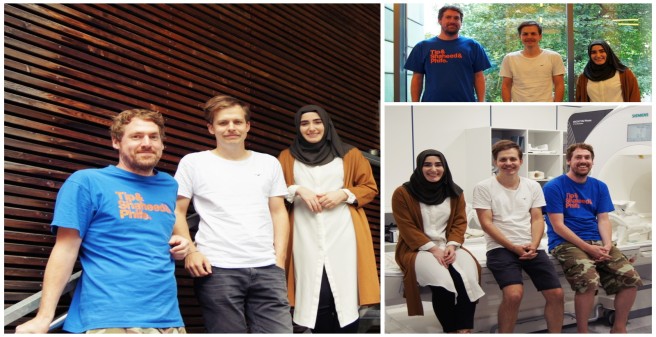Esser R, Fuss J & Haaker J: Initial evidence for pharmacological modulation of observational threat learning by the GABAergic, but not the noradrenergic system in humans Behav Res Ther 2020 Jun;129:103605.
Haaker J, Yi J, Petrovic P & Olsson A.: Endogenous opioids regulate social threat learning in humans. Nature Communications 2017 May 25;8:15495.
Haaker J*, Golkar A*, Selbing I* & Olsson A.: Assessment of social transmission of threats in humans using observational fear conditioning. Nature Protocols 2017 Jul;12(7):1378-1386. (*=equal contributions)
Lindström B *, Haaker J*, Olsson A.: A common neural network differentially mediates direct and social fear learning. NeuroImage. 2017; 167:121-129.(*=equal contributions)
Haaker J, Lonsdorf TB, Schümann D, Bunzeck N, Peters J, Sommer T & Kalisch R.: Where There is Smoke There is Fear-Impaired Contextual Inhibition of Conditioned Fear in Smokers. Neuropsychopharmacology 2017 Jul;42(8):1640-1646.
Haaker J, Menz M, Fadai T, Eippert F & Büchel C: Dopaminergic receptor blockade changes a functional connectivity network centred on the amygdala Human Brain Mapping 2016 Nov;37(11):4148-4157.
Haaker J, Gaburro S, Sah A, Gartmann N, Lonsdorf TB, Meier K, Singewald N, Pape H-C, Morellini F* & Kalisch R* : A single dose of L-DOPA makes extinction memories context-independent and prevents the return of fear. Proc Natl Acad Sci U S A (PNAS). 2013 Jun 25;110(26):E2428-36.(*=equal contributions)
Haaker J, Hermanns D, Golkar A & Lonsdorf TB: A review on human reinstatement studies: An overview and methodological challenges. Learning & Memory 2014 Sep 21: 424-440.
Haaker J, Molapour T, Olsson A.: Conditioned social dominance threat: observation of others' social dominance biases threat learning. Soc Cogn Affect Neurosci. 2016 May 20.
Haaker J, Lonsdorf TB, Kalisch R: Effects of post-extinction L-DOPA administration on the spontaneous recovery and reinstatement of fear in a human fMRI study Eur Neuropsychopharmacol. 2015 Oct;25(10):1544-55.

